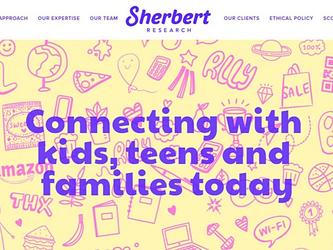Kids and Youth: Understanding children’s culture
Discussions at the conference covered a number of topics, including understanding youth culture, addressing social issues and exploring how to maximise the impact of children’s research. Here, we take a look at a few of the insight projects discussed.
Media behaviours
Ofcom presented findings from its video-based ethnographic research project with Revealing Reality. The project has followed 18 children for five years to obtain a detailed picture of their media use and how attitudes change over time, alongside changes both in technology and in their emotional, cognitive and social development. Ofcom uses findings from the qualitative research to complement its tracking on children’s media behaviour.
The increased ubiquity of smartphones over the five year period as had a knock-on effect on parents’ awareness of their children’s online activities, the research found. As children increasingly own their own devices at a younger age, their media habits are shifting away from communal TV viewing towards individual viewing via Netflix and YouTube. The study found children are spending more and more time physically alone in their bedrooms, while linear TV watching is increasingly limited to scheduled ‘appointments’ with the whole family sitting down to watch specific programmes.
The BBC and Sky also gave presentations on how they are approaching kids’ media research. The BBC has developed a cross-media approach to media insight (CMI) to complement existing tracking and industry currencies such as Rajar. CMI has uncovered a number of insights for the broadcaster, including learning that linear TV still accounts for around a third of children’s viewing time (where kids are using video on-demand, it’s in addition to linear), so there is still a big opportunity for the BBC to speak to children via linear channels.
Similarly, the Sky research with Giraffe Insights on the active viewing habits of children aged two to nine found that linear TV still ranked highly. The study also found that live TV is an important part of the routine for parents as it helps to establish time cues – for instance, getting their children ready for school in the morning.
Real vs virtual: understanding Fortnite
Ipsos and the Interactive Software Federation of Europe (ISFE) conducted multi-disciplinary research including video diaries and home interviews with children who are gamers to understand what makes Fortnite so compelling for kids.
The research found that although many of the elements of Fortnite aren’t particularly new, it has recycled popular culture for a new generation of children and created new media consumption cycles.
It also found a generational gap in understanding of virtual purchases such as Fortnite skins. While the parents interviewed didn’t tend to see the value of such purchases, for children they hold as much cultural currency as a physical gift such as a pair of trainers. In the context of society becoming more experience-based and children having more virtual experiences, the lines between the virtual and real worlds are becoming blurred.
This presents opportunities for brands where consumers are willing to buy virtual purchases, but the researchers recommended that brands need to package these gifts in a way that alleviates parents’ concerns that they are not buying something tangible, for example, including a physical t-shirt with a Fortnite skin.
Feeling like a seven-year-old
Britvic and Disney both shared insights on their approach to sharing immersive insights on children with the wider organisations. Both companies faced the challenge of communicating research findings and insight within large, diverse organisations.
Britvic worked with Kids Industries to develop the Museum of Childhood, an event set 100 years in the future to help internal stakeholders understand the experience of being a child in 2018. Participants – Britvic staff, the company’s agency partners and other kids’ brands – were invited to take SATS tests, speak to teachers and learn how to play Fortnite with children, as well as hear from child psychologists on the key issues facing kids.
For Ash Tailor, global category director at Britvic, the programme is important in terms of representing how the brand positions itself within children’s marketing and works both internally and with agency partners to bring insight to life. “As a client, I was very keen to do it because you can’t often measure it through a KPI – it’s a feeling you get within the organisation, it’s the change that you see. The behaviour change, both internally and within my agency partners, is the measure of success I put on something like this.”
Disney also ran an immersive internal event to communicate its Audience Explorer Framework, the result of primary and secondary research, to staff in the company’s EMEA headquarters. The company worked with The Mix to develop the campaign and event, which saw attendees take part in activities such as a ballpit and lying on the floor in the dark watching video projections to simulate the experience of a young child.
According to Rachel Westwood, senior research manager at Disney, it was important that the approach considered different learning styles to accommodate the different types of people attending the event – from accountants and lawyers, as well as those working in insight roles.

We hope you enjoyed this article.
Research Live is published by MRS.
The Market Research Society (MRS) exists to promote and protect the research sector, showcasing how research delivers impact for businesses and government.
Members of MRS enjoy many benefits including tailoured policy guidance, discounts on training and conferences, and access to member-only content.
For example, there's an archive of winning case studies from over a decade of MRS Awards.
Find out more about the benefits of joining MRS here.













0 Comments